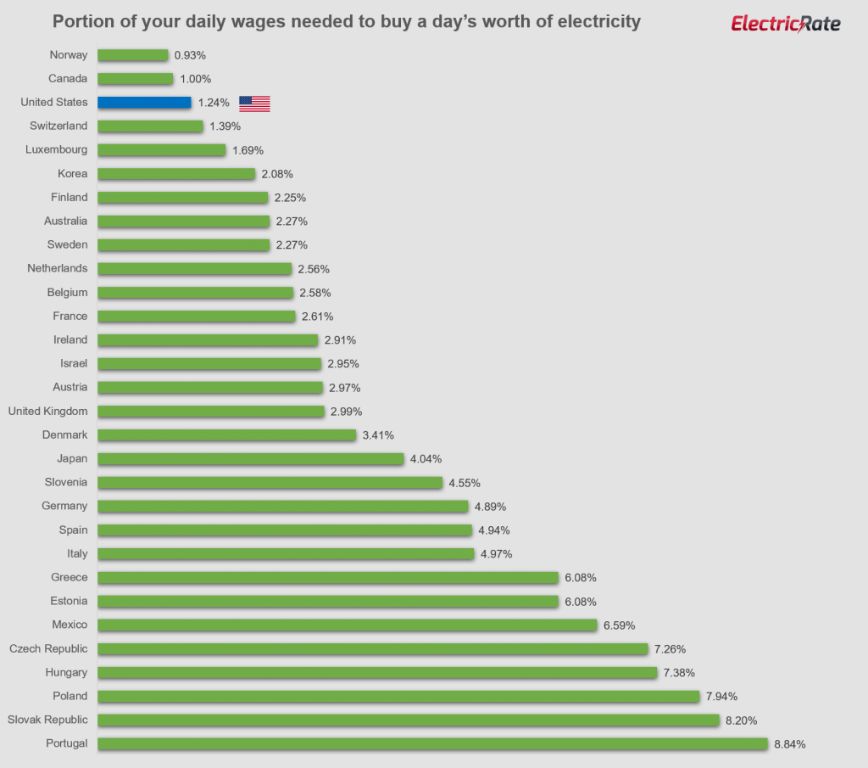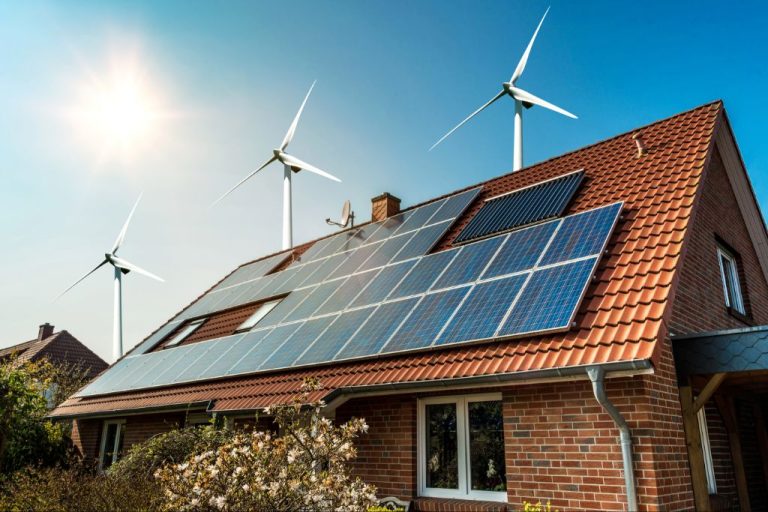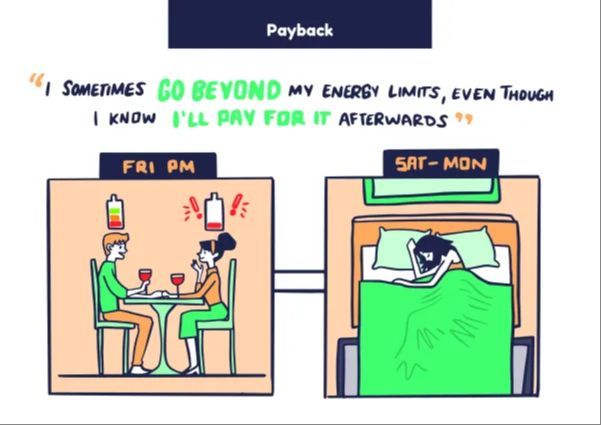Where Is The Cheapest Electricity In The World?

Electricity prices can vary significantly around the world, from as low as a few cents per kWh to over 50 cents per kWh. The cost of electricity depends on many factors, including the type of generation source, government subsidies and regulation, a country’s access to natural resources, and infrastructure costs. This article explores where some of the cheapest electricity can be found globally and what contributes to lower prices in those markets.
The countries with the lowest electricity prices tend to have a few key advantages. Abundant hydropower, coal, natural gas or other energy resources allow them to generate electricity cheaply. Government subsidies that artificially reduce prices are another factor. Nations with newer infrastructure also avoid some of the transmission and distribution costs that drive up prices elsewhere. The level of competition and regulation in the electricity sector, taxation rates, and population density further impact prices around the world.
Hydropower in Latin America
Latin America has some of the cheapest electricity in the world due to an abundance of hydropower resources. For example, Paraguay has electricity prices around $0.05 per kWh for households and $0.046 for businesses. This extremely low price is largely thanks to hydropower generating nearly all of the country’s electricity. Major hydroelectric dams like Itaipú, Yacyretá, and Acaray provide over 90% of Paraguay’s power.
Similarly, Venezuela has residential electricity prices around $0.046 per kWh and commercial prices around $0.053 per kWh. Abundant hydro resources, especially from the Guri dam, allow Venezuela to export electricity to neighboring countries while maintaining very low domestic prices.
Coal in Asia
Many countries in Asia rely heavily on coal for electricity generation due to extensive domestic coal reserves. This dependence on cheap, locally sourced coal helps lower electricity prices in the region.
For example, Indonesia and India have some of the cheapest electricity prices globally, enabled by their substantial coal resources. In 2022, the average electricity cost in Indonesia was around 1,473 Indonesian Rupiah per kilowatt-hour. India had average industrial electricity rates between $0.05-0.08 per kWh in 2021.
Coal accounted for around 60% of Indonesia’s electricity generation in 2021. India relied on coal for over 70% of its power. Abundant reserves of domestic coal in both countries reduce fuel costs for thermal power plants.
However, the extensive use of coal also has environmental impacts. Indonesia and India rank among the top greenhouse gas emitters globally due to coal. This highlights the complex dynamics between energy costs, energy security and climate considerations in Asia’s developing economies.
Natural Gas in the Middle East
Countries in the Middle East like Qatar and Kuwait have some of the lowest electricity costs in the world due to their abundant natural gas reserves. Natural gas is an efficient and relatively clean fossil fuel that can be used to generate electricity at low cost.
According to GlobalPetrolPrices.com, the price of electricity in Kuwait is around $0.03 per kWh for households and $0.049 per kWh for businesses. In Qatar, electricity costs only $0.03 per kWh on average for all sectors according to WorldPopulationReview.com. These costs are among the cheapest in the world.
The Middle East holds approximately 40% of the world’s proven natural gas reserves, with Qatar and Iran possessing the largest reserves globally. Kuwait also has significant natural gas reserves. This gives these countries a major cost advantage in generating electricity from gas instead of more expensive fuels.
With large domestic gas supplies, Qatar and Kuwait can generate electricity cheaply to meet their population’s energy needs. The production costs are low, and transportation costs are minimized when the gas only needs to move short distances within the country. Government subsidies in these nations also keep consumer electricity prices artificially low.
As long as natural gas reserves remain abundant in the Middle East, countries like Qatar and Kuwait are likely to retain some of the world’s cheapest electricity costs for residential and business consumers.
Nuclear in Eastern Europe
Many Eastern European countries like Ukraine and Hungary have access to inexpensive electricity due to nuclear power. For example, the average price of electricity in Ukraine is around $0.05 per kWh, one of the lowest rates globally (source). In Hungary, the average price is approximately $0.11 per kWh, also among the cheapest in Europe (source).
This is largely thanks to the legacy of Soviet-era nuclear power infrastructure still present in these countries today. Ukraine has 15 nuclear reactors providing over half of its electricity generation. Hungary has 4 nuclear reactors providing about 50% of its power. The existing nuclear plants provide inexpensive, reliable baseload electricity that helps keep prices low for consumers.
While there are downsides like safety concerns, nuclear power has proven to be a major economic advantage for Eastern European countries in terms of affordable electricity prices. The extremely low operating costs of nuclear plants compared to alternatives like natural gas or imported energy lead to very low wholesale power prices that can be passed onto consumers.
Renewables in South America
Some South American countries like Chile are transitioning to low-cost renewables like solar and wind power. Chile has an abundance of solar energy resources, with the Atacama Desert in the north being one of the best regions in the world for solar power. To encourage renewables, Chile implemented the Non-Conventional Renewable Energy Law which helped spur investments in solar and wind projects. As a result, renewables went from providing just 6% of Chile’s electricity in 2013 to over 20% by 2020. The increased renewable capacity has helped lower electricity prices. For example, a new law in 2019 stabilized electricity prices by canceling a planned 9.2% price increase. The growth of low-cost renewables in Chile demonstrates the potential for South American countries to transition away from fossil fuels and provide affordable electricity through clean energy sources.
Government Subsidies
Some governments provide subsidies to keep electricity prices artificially low for consumers. One notable example is Iran, where the government has historically provided heavy subsidies for electricity. According to the World Bank, Iran’s electricity subsidies reached up to 15% of GDP in 2007-2008, keeping prices well below production costs.
In 2010, Iran embarked on a program to drastically cut electricity subsidies over 5 years in order to ease the heavy burden on public finances. According to an article in the Tehran Times, ending electricity subsidies saved Iran $10 billion in 2011 alone (Tehran Times). The subsidy cuts allowed Iran to boost electricity exports and reduce rampant energy consumption and waste.
However, reducing subsidies remains politically difficult in Iran as consumers protest rising prices. The subsidy cuts have led to periodic increases in electricity prices, contributing to inflation. Nonetheless, phasing out subsidies has allowed Iran to more sustainably support its electricity sector.
Access to Energy
While some countries like Venezuela and Iran have very cheap electricity costs, many citizens still lack access to power in parts of the world. According to Statista, in 2021 approximately 19 million people in Madagascar lacked access to electricity. Similarly, around 18 million people in both Burkina Faso and Angola lacked access that year. Despite having low costs, many developing countries struggle to provide electricity to rural and isolated communities.
The International Energy Agency reported that in 2018, 840 million people globally did not have access to electricity. The countries with the largest deficits were located mainly in sub-Saharan Africa, with nations like Ethiopia, Congo, and Tanzania showing electricity access rates below 50%. Even in the Asia Pacific region, countries like Cambodia still had over 60% of the population without power. While costs play a role, poverty, instability and lack of infrastructure impact access perhaps even more in many developing countries.
Price Trends
According to data from Global Petrol Prices, the global average electricity price for households has increased from around 10 cents per kWh in 2000 to over 15 cents per kWh in 2021. This represents a 50% increase over the past two decades. Some major factors contributing to rising electricity costs include:
– Increased demand as populations grow and developing nations industrialize and electrify. This strains electricity infrastructure and supply.
– High fuel costs, especially for natural gas and coal which are commonly used for power generation. Market dynamics like supply crunches can rapidly increase these input costs.
– Upgrading aging electricity grids and systems. New smart grid technology improves reliability but requires large capital investments.
– Transitioning to renewable energy sources like wind and solar. While costs are falling, they remain higher than legacy power plants in most markets. Government subsidies are often required.
Going forward, innovative technologies like battery storage and advanced metering infrastructure could help mitigate rising costs. But absent major breakthroughs or policy changes, the overarching trends point toward persistently high or increasing electricity prices worldwide.
Conclusion
In conclusion, the cost of electricity varies greatly around the world, with some of the cheapest electricity being found in Latin America, Asia, the Middle East, Eastern Europe, and South America. Key factors that contribute to lower electricity prices in these regions include access to abundant low-cost energy sources like hydropower, coal, natural gas, and nuclear as well as government subsidies. However, cheap electricity often comes with tradeoffs in terms of environmental impacts or reliance on imported fuels. As renewable energy costs continue to fall, they may emerge as the cheapest source of electricity globally while also providing sustainability benefits. But access, price trends, and regulations will need to be monitored to determine the world’s cheapest electricity in the years ahead.







